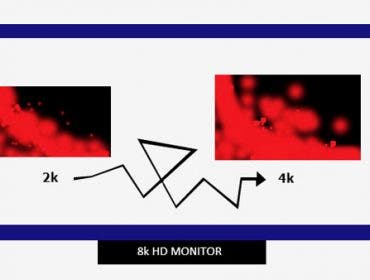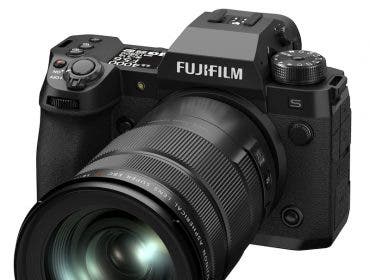Vimeo recently (and very quietly) announced that 4k playback will be available for streaming. Although the ability to download 2.5K to 4K files has existed for awhile now, this is the first time you can view full 4K content via the video-sharing website. This is something that should excite a lot of high-end filmmakers or those who want to show off the wide dynamic range of their footage. Especially since 4K is becoming more accessible at a lesser price point. Heck, even the latest iPhones can shoot 4K now. But there is a caveat. At the same time, Vimeo is rolling out its new adaptive streaming technology which will restrict the way one can view videos depending on the network connection and graphics processing ability. So if you own an inexpensive Dell computer with a slow internet service to boot, you may not be able to view the full 4K glory as was intended. You may not even be able to view it at full 1080p.
 Up until now, you would click on the “HD” logo at the bottom right of the media player so that a list would appear offering you the choice of 360p up to 1080p.In just a few months that function will disappear and make way for something more intuitive. Basically, the only option available will involve viewing the setting best suited for your computer/network setup. For a lot of computer owners, 720p may be the maximum quality allowed. You see, not everyone owns a souped-up system with bitchin’ graphics cards, fiber optic connectivity and 5K retina displays.
Up until now, you would click on the “HD” logo at the bottom right of the media player so that a list would appear offering you the choice of 360p up to 1080p.In just a few months that function will disappear and make way for something more intuitive. Basically, the only option available will involve viewing the setting best suited for your computer/network setup. For a lot of computer owners, 720p may be the maximum quality allowed. You see, not everyone owns a souped-up system with bitchin’ graphics cards, fiber optic connectivity and 5K retina displays.
But what if that doesn’t matter?
The question most filmmakers should have on their mind is, simply, why shoot with 4K in the firstplace? UHD TVs are out there for the picking yet there is still a reluctance to broadcast 4K signals, especially when 8K is peering around the corner, threatening to steal its thunder. So if the majority of people out there do not have the means to view 4K footage on a 4K monitor or TV set, then what’s the point? From a production standpoint, the use of 4K existed within the small domain of high-end filmmakers and production companies. A $10,000 Red Scarlett camera without the accessories would’ve been considered a bargain at the time. However, to actually shoot in either 2.5K or 4K ensures a more detailed image shot through a sensor that could approximate a 16mm to 35mm frame size. Thus, the format was tailor-made for large screen projection. Just output to the proper size and it would fit the movie theater screen perfectly without a loss in resolution.

Even if the intended output wasn’t 4K/35mm, the large pixel count gave creative freedom to the post-production specialist. You can shoot your subject within a wide shot. But the resolution is so large you can scale up to a medium or close-up without having the image deteriorate into too much artifacting and grain. And even if you place a 2160p clip in a 1080p editor timeline, your footage would still retain the detail that is superior to 2K’s resolution. In other words, even if you cannot view a video or feature film in its full, 4k glory, you can still appreciate the detail that comes with shooting on a 4K camera.
In fact, to fully appreciate a 4K or even 8K broadcast, it would require a monitor of considerable size. So should you decide to invest in a Sony a7r II or Canon XC10, the experience of gathering the relations to view that holiday home movie is dependent on the medium through which it appears. So, yeah, that video you shot with your iPhone 6s of your youngest child splashing around in a bath? It’s not like it will achieve the full impact on your LG HD television the way it might on a Samsung UHD screen.
So, again, what’s the point? As mentioned before the devil is most definitely in the detail: 4K footage will still look better on a 720p media player than that shot on 2k. It is still a viable opportunity to showcase one’s cinematography. While YouTube functions more or less as a social network to store then share videos of dubious quality uploaded for trending purposes via platforms like Facebook, Vimeo acts more as a portfolio for those who want to promote visually compelling work… even though the ability to view 4K on YouTube has existed since 2010.
If you’re a filmmaker, D.P. or budding videographer looking for work, you can’t lose with Vimeo’s 4K option regardless of the restrictions resulting from their adaptive technology. The footage you’ve shot will still look great while those potential employers (producers, directors, production managers) may have the technology to view it in the proper format anyway. The only downside is post-production workflow: 4K codecs can be a pain to work with and slows down the process. But as non-linear editing systems are continually upgraded to accommodate the progression of higher formats, eventually this issue too will ebb.




